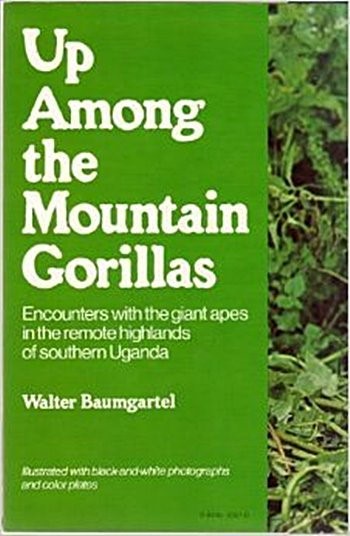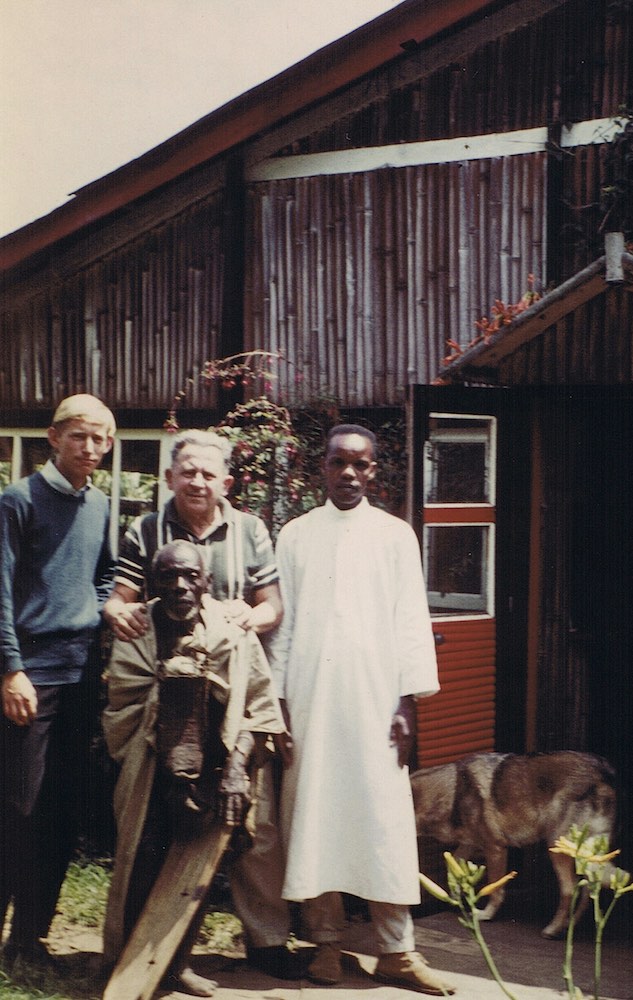Walter Baumgartel
Father of gorilla tourism in Uganda and owner of Travellers Rest Hotel
Walter Baumgartel
Walter Baumgärtel – Father of Gorilla Tourism in Uganda was instrumental in convincing the British Colonial Government to allow visitors to see the Mountain Gorillas in the Hills surrounding in those days, the small, dusty town of Kisoro where he was the owner of Kisoro’s finest at that time – the Travellers Rest Hotel.
BACKGROUND ON TRAVELLERS REST HOTEL
Back in the 1960’s Travellers Rest Hotel was a base of expeditions from where Dian Fossey, George Schaller, Raymond Dart and Bernard Grzimek amongst others. It offers a convenient location for a number of activities including gorilla tracking, golden monkey tracking, exploring the Batwa Trail and volcano climbs together with a variety of boating activities which can be enjoyed at Lake Mutanda.
Travellers Rest Hotel became a mecca for visiting biologists from all over the world; the guest register has all the top names in the field from that time. These included Sir Julian and Lady Huxley who had visited the area once before in 1929 and walked from Kabale to Kabara, via Rutshuru, to visit Akeley’s grave. Robert Ardrey, dramatist, actor and evolutionist, who wrote a number of controversial books on human origins and evolution, visited to gain an understanding of the links between primate and human behaviour. Niels Bolwig, Witwatersrand University, was the first to study gorilla nest building.
Walter’s hotel was an oasis to many scientists who came here before me. - Dian Fossey. Fossey visited the hotel many, many times in the sixties, to do paperwork, to relax or to meet people. She defined the hotel as her “second home”.
WALTER'S STORY
Walter Baumgärtel never fit the mold – born in Delitzsch Germany, 22nd of December 1892 He grew like most other German children became a bookbinder apprentice – but he had a thirst for a larger world than the one he was in. Within him was a thirst to discover the lands he read about in his youth and he ventured into the countries along the Mediterranean Sea, then on to East Africa, Sri Lanka and Malaysia.
South Africa became his country for many years, there he owned a shop that sold musical instruments and photographs and earned extra money by being a free-lance photographer. Though he was German – he was also a man of conscience and was with the British Military doing reconnaissance photography during World War II. After the war he spent some in Florence, Italy. While visiting London he read an advert for a job at a Hotel in Arusha, Tanzania – it did not work out and once again he became restless and started to look for greener pastures. He wound up in Kisoro at the Travellers Rest Hotel where he had a partner who always had grandiose plans such as a large American vehicle to pick up tourists in Kampala (the vehicle was more down than running), an airstrip where planes were going to land and bring people in, however the area selected was simply too tough, lava rock and in the end the project was abandoned. The partner and his spouse also took the best rooms in the hotel leaving bad ones for the guests. At the end of the day Walter Baumgärtel bought his partner out and became the sole proprietor of Travellers Rest Hotel. It became a place that those involved in the Gorilla Research used as their base of operation or like Dian Fossey who called Travellers Rest her second home. A place where she would spend Rest & Recuperation time and do her paperwork. She loved the place and respected Walter Baumgärtel. Dian Fossey’s Words “His Travellers Rest Hotel had been an oasis to many scientists preceding me … I had met Walter on my first safari in 1963, and during the six-and-a-half-month study in 1967 had grown to think of him as one of the kindest and most endearing friends I had made in Africa.” Many Mountain Gorilla Researches stayed at the Travellers Rest Hotel – such as – George Schaller, Bernhard Grzimek, Raymond Dart and Dian Fossey, and many others. Besides being a Hotelier-Walter Baumgärtel took an interest in the Mountain Gorillas found in the foothills of the Virunga’s and Bwindi Impenetrable Forest. His first encounter transformed him and he became dedicated to the conservation of Mountain Gorillas. By that time in the Kisoro area – Mountain Gorillas were disappearing due the encroachment of people and their clearing of the forests for farmland. In those days there was also some permitted hunting allowed by the British who oversaw the protectorate of Uganda and also poaching. The paws of gorilla’s were made into ashtrays and other silly things that thank goodness have seized today. Finally – Mountain Gorillas were being brought into zoos in the West where all died – no Mountain Gorilla has ever survived captivity. All in all the Mountain Gorilla population was on the decrease. Walter Baumgärtel, in his book “Up Among the Mountain Gorillas”, he recounts as he went with his guide Ruben to his first gorilla encounter: They walked a path up the mountain, out of the woods next to them a gorilla came out and disappeared in the woods opposite. He was followed by a gorilla mother with a child. The child was curious, like all children, stopping to inspect the two people. The mother came back immediately and took her child by the hand, “gave him a pat on it back and pulled him into the forest after the dad”. Baumgärtel, “This family scene, so touching human, changed my behavior to the gorillas of reason: they were not animals for me, but family.” That first encounter with Mountain Gorillas changed Walter Baumgärtel forever – he began to think of ways to protect the Mountain Gorillas through tourism. It was his thought that if tourists came and paid hard cash, the government would step in and start to protect the Mountain Gorillas. At first the British Colonial Government denied him that privilege, but later relented and gorilla tourism as we know it today was in its infancy.In 1955 he began to offer gorilla tracking to his guests. He built a small camp on the saddle between Mts. Muhavura and Gahinga; he was genuinely interested in the gorillas and attempted to involve the international science community. However, the gorillas’ elusiveness was a problem. Baumgartel tried to habituate the gorillas by offering them various foods but all his attempts were unsuccessful; though this led to later successful tracking methods using Batwa guides. Eventually some groups did get habituated, more by accident than design. Baumgartel’s main guide was a Hutu named Rueben (Roveni) Rwanzagire of Nyarusiza, a mountain guide.
Guests from his hotel were taken up into the mountains for an meeting with the mountain gorillas, the modern Gorilla tracking safari was taking place and visitors were amazed by what they found and encountered – the gentle giants of the rainforest. Baumgartel had realized that the survival of the mountain gorilla was closely related to the preservation of the tropical forest. Nowadays, park managers and local communities are aware that they can benefit more from preserving the parks than they would from clearing them as farmland. In 1962 Uganda gained independence and Walter Baumgärtel felt the hostile winds of change to his desires and wishes regarding Mountain Gorillas. He returned to his mother country of Germany where he lived for many years in homes for the aged – his eyesight that had been a problem in Uganda – gave out totally – he died blind and poor in 1997, but never forgot his beloved Mountain Gorillas of Uganda.PUBLICATIONS
His book Up among the Mountain Gorillas is an interesting perspective of the history of Uganda and the early days in tourism (and a great primer about Mountain Gorillas). Walter Baumgärtel left his mark in this place that the Mountain Gorillas call home – his work continues….Walter Baumgartel – Father of Gorilla Tourism in Uganda.
Courtesey: by Kabiza Wilderness Safaris
Go back to: Leaders in tourism and conservation

.jpg)
